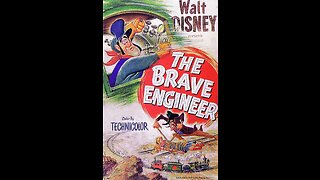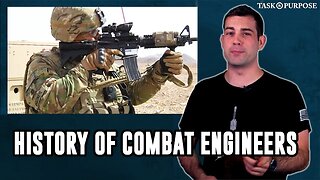SOLDIER: what is an army 🪖 Engineer 🔥😈
The history of the American Army is extensive and spans over several centuries. Here is a concise overview of key periods and events in the history of the U.S. Army:
1. Colonial Era and Revolutionary War (1775-1783):
The U.S. Army traces its roots back to the Continental Army established by the Second Continental Congress in 1775.
The Continental Army, led by General George Washington, fought against the British forces during the American Revolutionary War.
The war concluded with the Treaty of Paris in 1783, securing American independence.
2. Early Republic and Expansion (Late 18th to Mid-19th Century):
The U.S. Army was significantly downsized after the Revolutionary War but was still important in maintaining order on the frontier.
The Army's role expanded during conflicts such as the War of 1812, the Mexican-American War, and engagements with Native American tribes as the United States expanded westward.
3. Civil War (1861-1865):
The U.S. Army split along regional lines during the American Civil War, with the Union Army fighting to preserve the United States and end slavery, while the Confederate States had their own military.
The war was one of the bloodiest conflicts in U.S. history, resulting in significant loss of life and reshaping the nation.
4. Post-Civil War and Indian Wars (Late 19th Century):
Following the Civil War, the U.S. Army focused on maintaining order in the Western territories and engaging in conflicts with Native American tribes resisting westward expansion.
5. World Wars and Cold War Era (20th Century):
The U.S. Army played a pivotal role in both World War I and World War II, contributing to victories on multiple fronts.
During the Cold War, the Army was part of the broader U.S. military strategy to deter the spread of communism.
6. Korean War, Vietnam War, and Modern Era (Mid-20th Century to Present):
The U.S. Army was involved in the Korean War and the Vietnam War, facing challenges in unconventional warfare and counterinsurgency.
In the modern era, the U.S. Army has been engaged in various conflicts and operations around the world, including the Gulf War, Iraq War, Afghanistan War, and ongoing efforts against terrorism.
7. Modern Operations and Adaptations:
The U.S. Army has undergone changes to adapt to modern warfare, focusing on technological advancements, mobility, and joint operations.
The Army has also been involved in humanitarian missions, disaster relief, and peacekeeping operations.
Throughout its history, the U.S. Army has evolved in response to changing geopolitical landscapes and military strategies. It has played a vital role in shaping the nation and safeguarding its interests at home and abroad.
The history of the American Army is extensive and spans over several centuries. Here is a concise overview of key periods and events in the history of the U.S. Army:
1. Colonial Era and Revolutionary War (1775-1783):
The U.S. Army traces its roots back to the Continental Army established by the Second Continental Congress in 1775.
The Continental Army, led by General George Washington, fought against the British forces during the American Revolutionary War.
The war concluded with the Treaty of Paris in 1783, securing American independence.
2. Early Republic and Expansion (Late 18th to Mid-19th Century):
The U.S. Army was significantly downsized after the Revolutionary War but was still important in maintaining order on the frontier.
The Army's role expanded during conflicts such as the War of 1812, the Mexican-American War, and engagements with Native American tribes as the United States expanded westward.
3. Civil War (1861-1865):
The U.S. Army split along regional lines during the American Civil War, with the Union Army fighting to preserve the United States and end slavery, while the Confederate States had their own military.
The war was one of the bloodiest conflicts in U.S. history, resulting in significant loss of life and reshaping the nation.
4. Post-Civil War and Indian Wars (Late 19th Century):
Following the Civil War, the U.S. Army focused on maintaining order in the Western territories and engaging in conflicts with Native American tribes resisting westward expansion.
5. World Wars and Cold War Era (20th Century):
The U.S. Army played a pivotal role in both World War I and World War II, contributing to victories on multiple fronts.
During the Cold War, the Army was part of the broader U.S. military strategy to deter the spread of communism.
6. Korean War, Vietnam War, and Modern Era (Mid-20th Century to Present):
The U.S. Army was involved in the Korean War and the Vietnam War, facing challenges in unconventional warfare and counterinsurgency.
In the modern era, the U.S. Army has been engaged in various conflicts and operations around the world, including the Gulf War, Iraq War, Afghanistan War, and ongoing efforts against terrorism.
7. Modern Operations and Adaptations:
The U.S. Army has undergone changes to adapt to modern warfare, focusing on technological advancements, mobility, and joint operations.
The Army has also been involved in humanitarian missions, disaster relief, and peacekeeping operations.
Throughout its history, the U.S. Army has evolved in response to changing geopolitical landscapes and military strategies. It has played a vital role in shaping the nation and safeguarding its interests at home and abroad.
-
![Squad [Recon Combat Engineer]](https://hugh.cdn.rumble.cloud/s/s8/1/5/v/s/Q/5vsQj.0kob-small-Squad-Recon-Combat-Engineer.jpg) 31:53
31:53
v-jet
1 year agoSquad [Recon Combat Engineer]
3 -
 18:10
18:10
Archive of The History Guy: History Deserves to Be Remembered
1 year agoAlden K. Sibley and the U.S. Army Corps of Engineers
22 -
 7:40
7:40
ATSAU Entertainment's Saturday Morning Cartoons
10 months agoThe Brave Engineer
261 -
 3:23
3:23
Task & Purpose
4 years agoCombat Engineer US Army History
11 -
![Squad [Fierce Combat Engineer]](https://hugh.cdn.rumble.cloud/s/s8/1/t/B/c/9/tBc9m.0kob-small-Squad-Fierce-Combat-Enginee.jpg) 39:04
39:04
v-jet
8 months agoSquad [Fierce Combat Engineer]
-
 23:44
23:44
Pere10
1 year agoMilitary tailor
4 -
 3:09
3:09
Fa17hPatriQt
5 months agoI AM A SOLDIER!
3851 -
 3:09
3:09
StoneFaithPatriot
5 months agoI AM A SOLDIER!
4.05K14 -
 3:16
3:16
Deadly Udders
6 months agoWar Factory - Space Engineers
3 -
 2:37
2:37
AmericanEducationFM
7 months agoI AM A SOLDIER.
5364